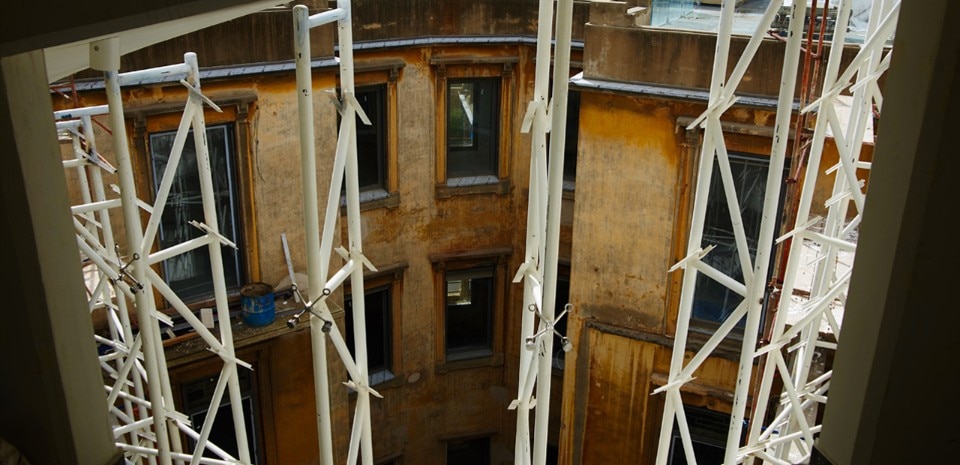We met Mona in her home in Beirut, where we engaged in a discussion around memory, city and activism and Mona’s stories become a storytelling of urbanism.
Dalia Chabarek, Camillo Boano: So maybe we can start with you introducing yourself.
Mona El Hallak: I was born in Beirut and I’ve lived here all my life. I graduated in architecture from the American University of Beirut in 1990 at the end of the fifteen-year Civil War. Going to Downtown Beirut after the war, all the destruction was really a shock. Living in Florence for one year (1993) while studying for my master degree, I saw the importance of heritage in shaping the way you live in a city.
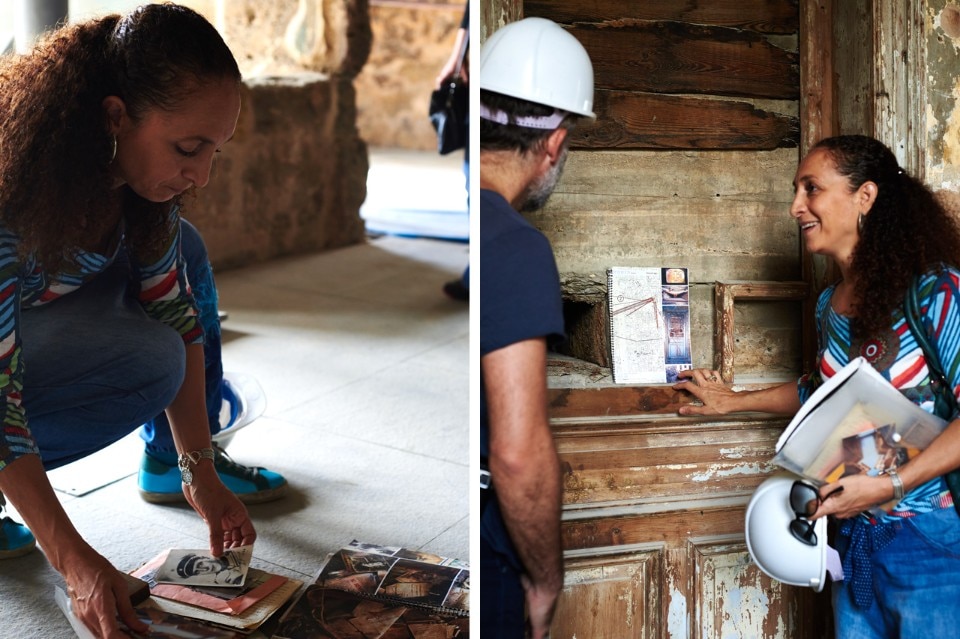
When I was in Florence in 1993, Downtown Beirut was being destroyed completely; buildings were dynamited. Solidere, the real-estate company would rebuild it with very little regard to what it used to be.
The first thing I did when I came back was to go down and see what I have seen on the news and in the newspapers. I went to Bourj Square (now known as Martyrs’ Square) thinking that the statue should have been there in the middle, but it was an empty space from the Opera Building, which today is Virgin Megastore, all the way to the first building in Gemmayze neighbourhood. The Bourj Square that was in my memory, the heart of Downtown Beirut that divided the city into two, the symbol of what Downtown Beirut was, was suddenly a desert; sand and bulldozers running back and forth making it flatter and flatter.
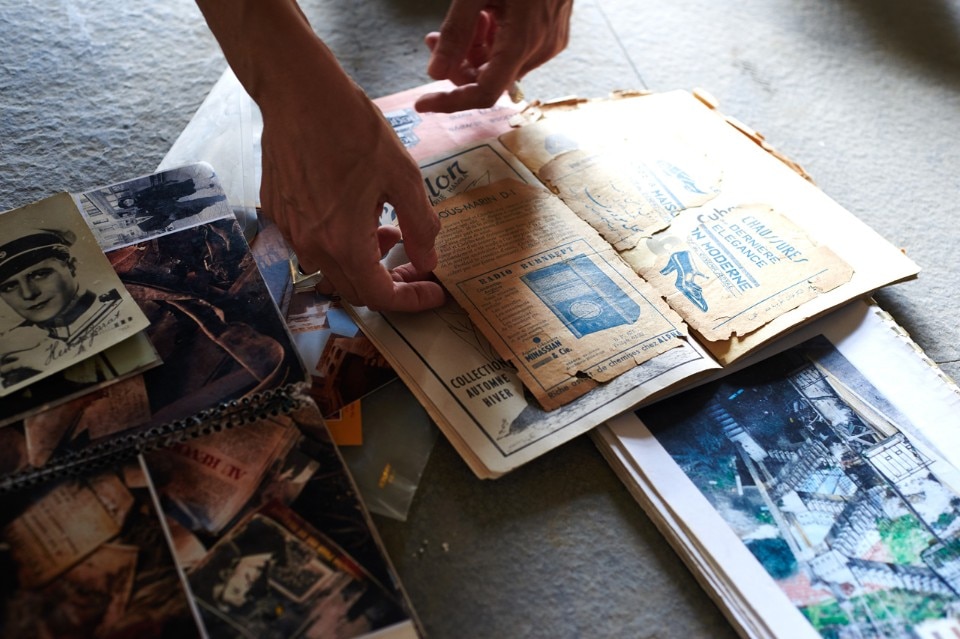
Chabarek, Boano: What kind of memory do you value most? Do you value the memory of the war? Or the memory of what was before the war?
Mona El Hallak: No, it’s the memory of the city itself, before, during and after the war. When people talk about life before the war, these stories tell you about things that united people at that point and that you miss now, because we lost the collectively of things, because we have lived the war and we have lived the material post-war era. When I was trying to survey the buildings around Downtown Beirut, I found that there were memories not only of buildings in their technical and formal nature, but of what happened in those buildings, how those buildings were built, the people living in those buildings, the gardens that open to those buildings.
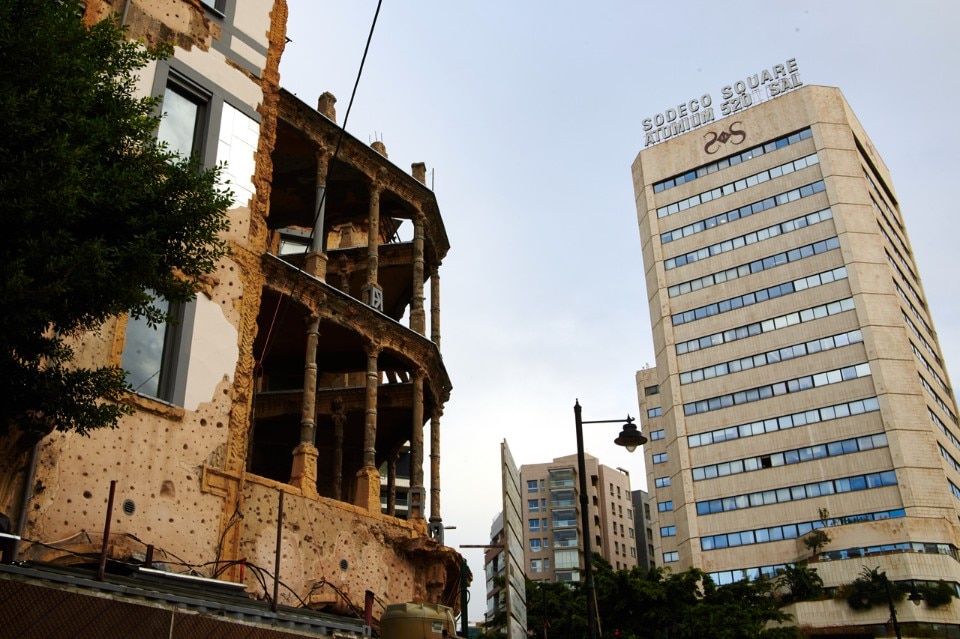
Chabarek, Boano: Erasure of memory and life in the city? A Kind of the one depicted in Gabriele Basilico’s pictures of that time.
Mona El Hallak: Even the statue was not there because they took it for restoration. So, suddenly, I lost reference to Downtown Beirut, to my own city. I couldn’t see where Bourj Square was, and for an architect, a Beiruti, Bourj Square was like a Piazza Navona for a Roman. But suddenly, the Solidere vision became very clear: Bourj Square would be changed from a square to a boulevard, an empty space ready to receive buildings, with a sea view, which means a lot of money. When you are in Downtown you can make money, but when you are in Downtown and you can see the sea, it’s double the money.
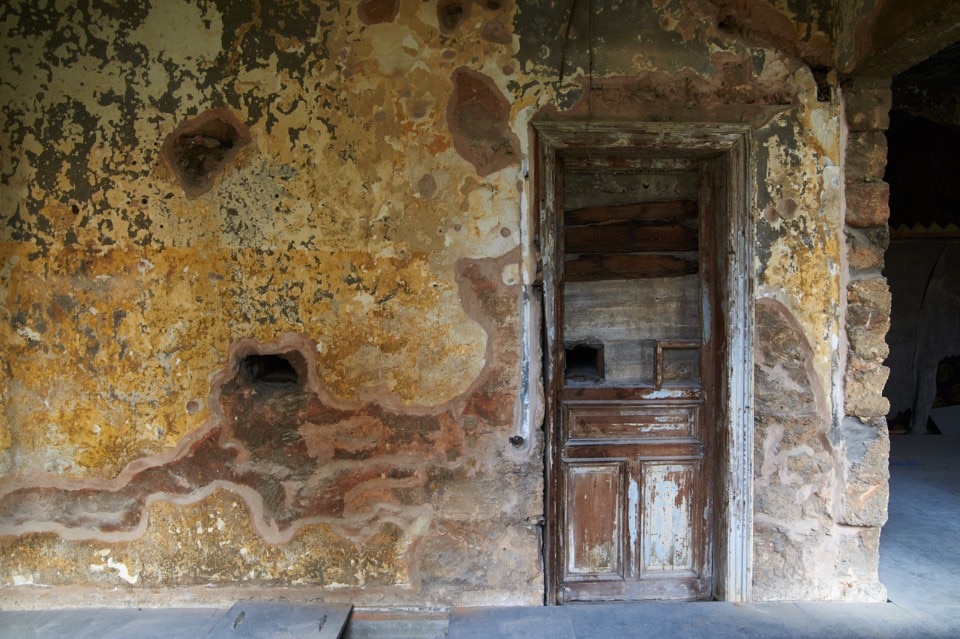
Chabarek, Boano: Let’s talk about Beit Beirut and your story with it.
Mona El Hallak: One day I reached the Sodeco intersection and there I looked and I saw the yellow house, the Barakat building (designed by the architect Youssef Aftimus and then Fouad Kozah added on). To me it was so destroyed and so damaged, like all the other buildings I saw along the way, but this building had something different. The most important thing when I stood at the intersection, I looked at the building and I could see the sky through the building, as if there was nothing behind it. But the light in this particular building was much stronger than the destruction. This building was built, deliberately to create visual transparency and relationships to the city wherever you stand in the building. This is rare, even in contemporary constructions.
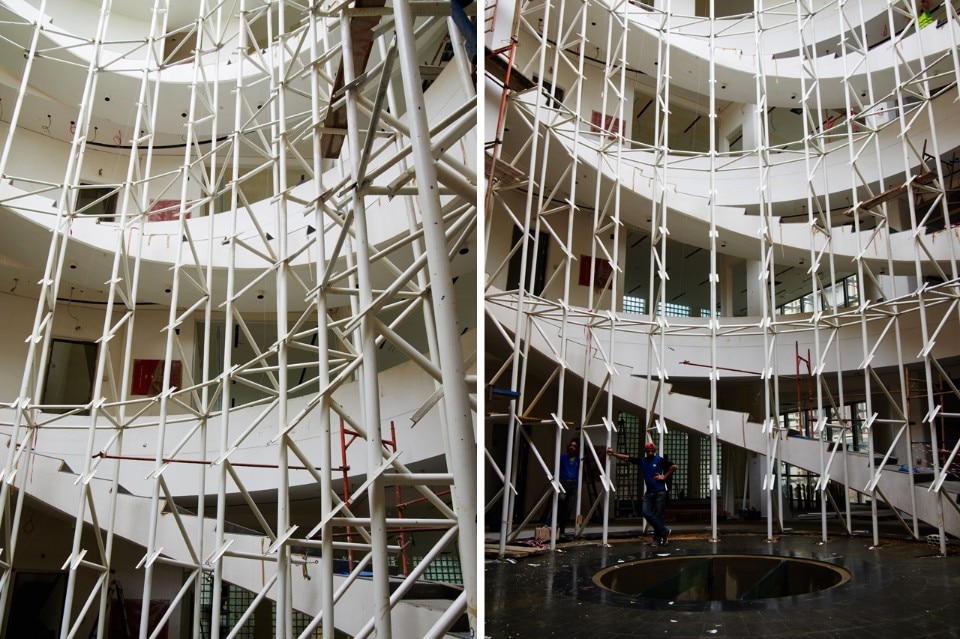
Chabarek, Boano: And what was the experience when you entered the building?
Mona El Hallak: Then, I walked into a room and a different story started. I found that this was a place where there was a bunker for the snipers and they had built their own architecture inside the rooms. They did not just pile sand bags, but they actually built concrete walls with sand bags and created boxes to kill people at appropriate directions. They built other walls and they protected themselves so well inside that building. Once inside there was an architecture of war, architecture of death. When I first stood behind those walls it was a very cold feeling because suddenly this beautiful building filled with light and yellow stone transformed into a place of death. It became a bunker where somebody stood and killed people. So I was in the place where the sniper was and I was looking through his eye to the city instead of looking through the architect’s eye to the city. This overlap of the two visions, of an architect who loved the city and a sniper who killed people in the city through the same visual axes, was very strong. At the same time the building itself was divided by this void in the middle between East and West, between the two apartments on the first floor, which I found out later that a Falangist doctor and Palestinian family were living side-by-side, so it kind of had all the overlapping memories and layers of memories of the war.
Then, on the first floor, across from the snipers’ nest, there was an apartment, I walked in and throughout the whole apartment piles of memories start emerging. Piles of papers and newspapers, visiting cards and photographs and hundreds of notes and clothes and whatever remained of the life of the person who was living there. I found the name on the door: Doctor Nagib Chemali, surgical dentist. Doctor Chemali used to live in that first apartment on the east side and for some reason he left, because in 1975 this building became unliveable. He left and he took nothing with him, nothing of importance. Of course, he might have taken everything of material value but he left his life on the floor. All the memories of the city were suddenly under my feet. I just had to dig and find them. There was an amazing amount of things, of course he was a dentist, so I even found clothes, notes, books, archives, medicines, and his dentist chair. It made this building not only talk about the war and the damage during the war. It also talked about the life before the war.
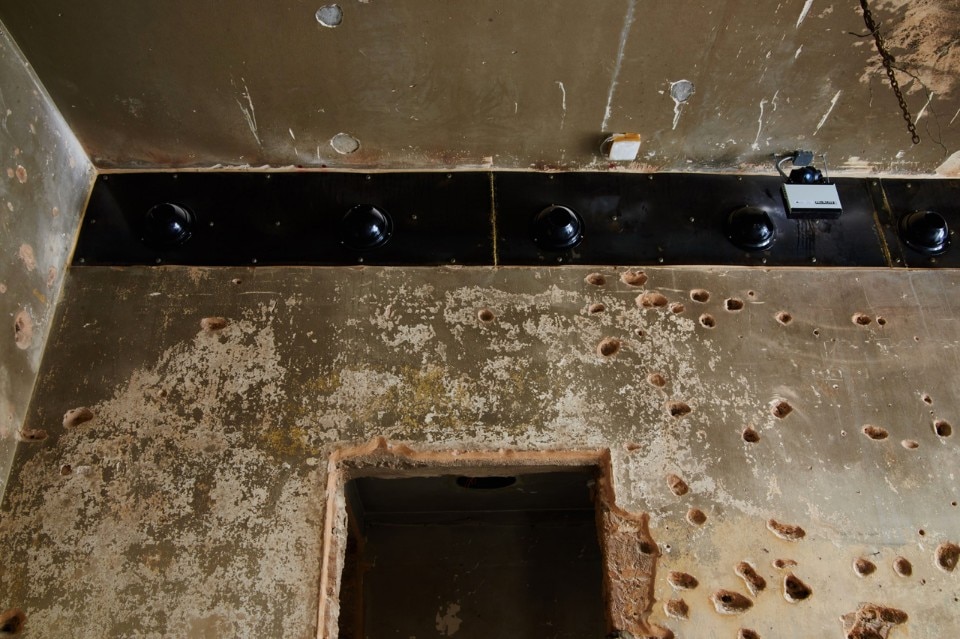
Chabarek, Boano: What happened then since that day you entered the Barakat Building?
Mona El Hallak: From 1994 to 1997, I was just visiting the building and collecting whatever objects I found there, showing it to friends, architects, journalists, artists, performers.
It was like my secret hideout in Beirut. I never thought that it would be destroyed, but in 1997 a permit was issued to destroy the building, but luckily I was on site on the day that they were due to begin demolition and I tried to stop it. It was a war memorial by itself and it had the history before the war. It was a heritage building also. It was and still is unique.
Then from 1997 to 2003 I dedicated all my time to making this building stay. Finally the municipality announced that the building was staying as a museum of memory of the city of Beirut. It took from 2003 to 2008 to expropriate the building. When the work started, I was hoping for an architectural competition, but after all the municipality chose not to have a competition, but commissioned the architect Youssef Haidar. His concept of adding prosthesis to the damaged parts of the building is too brutal and the way it was finally executed added an aggressive feel to the building that it didnot have even in its war-scarred state. The fake bullet holes on the facade ridicule the real ones. The ramp that replaced Fouad Kozah’s beautiful open air stairs has an envelope of heavy vertical supports that obstruct the transparency onto the old building and through it to the city behind, a unique characteristic that should have been celebrated in the new addition.
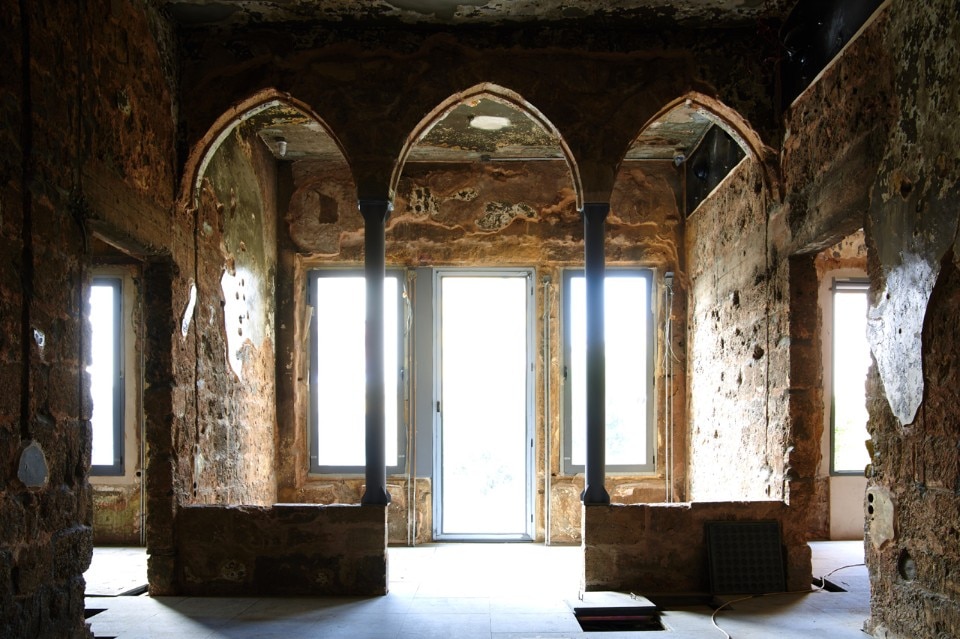
Chabarek, Boano: What is your vision for this building?
Mona El Hallak: Now, the building, as a skin, as a container, has been damaged by the rehabilitation but at the same time it’s so strong that you can see the original building, and you can see the recent additions and you can differentiate between them. I think the building is still strong enough to deny even the additions and to reject them visually. But for me what really matters is the content of the building. As a museum of memory I think it wants to try to reunite the city and to give back the city’s importance with respect to its citizens, so that somebody who comes into this building would learn about the city. It is not a memorial to the civil war – this should happen somewhere else but not in this building – it is not who killed who and when and the timeline of the war. It is what happens during the war to a human being and to a city.
Chabarek, Boano: Do you feel like you have a personal connection to the snipers, to Dr. Chemali, the Palestinian family?
Mona El Hallak: To me there is a very weird connection, with the building and with its people, because I discovered the people through the building. Dr. Chemali became the Dr. Chemali that the building created and not the real Dr. Chemali. I know that I have enough information about him to find his relatives and can discover much more about him, but this is what the building wanted me to know about him. There was also the pleasure of letting the building tell me what it wanted to tell me, and it had told me the story in different ways. I used to find letters on the ground that said: “dear mom” or “dear dad” and they were by different names including Edward, Joseph, and Joan. They always said “send our regards to our sisters Marie Therese and Margarite”. So for seven years I thought he had five children. I am hesitant whether I want it to be a real story. Do I really need to know who Dr. Chemali is? Or was it my way to keep the building alive? Is it important to know exactly who he is? Or is it the experience that he made me go through by finding these papers and putting the story together? Dr. Chemali haunted me for a long time until the day I found the paper that he died in 1973. You have the papers of the life of a person! At the same time it made me think a lot about the different dimensions of war, because it makes you think that war not only destroys buildings, kills people, makes people scattered, makes them lose their homes, their love ones, their memories, their things, but it also allows others to invade their lives. There is a brutal aspect of war that your life could be completely exposed.
I only met one sniper who was real, his name was George. He was so disturbed psychologically, he only lives during the night and he sleeps all day. In some way or another, snipers are victims. And their stories have to be told together with the people who were killed because they were ultimately young people that were told that killing will put you in power. It is important that the Barakat Building was a sniper’s location because this is one of the manifestations of war that is the cruellest and the one that we should really start from to stop any other repetition of this war.
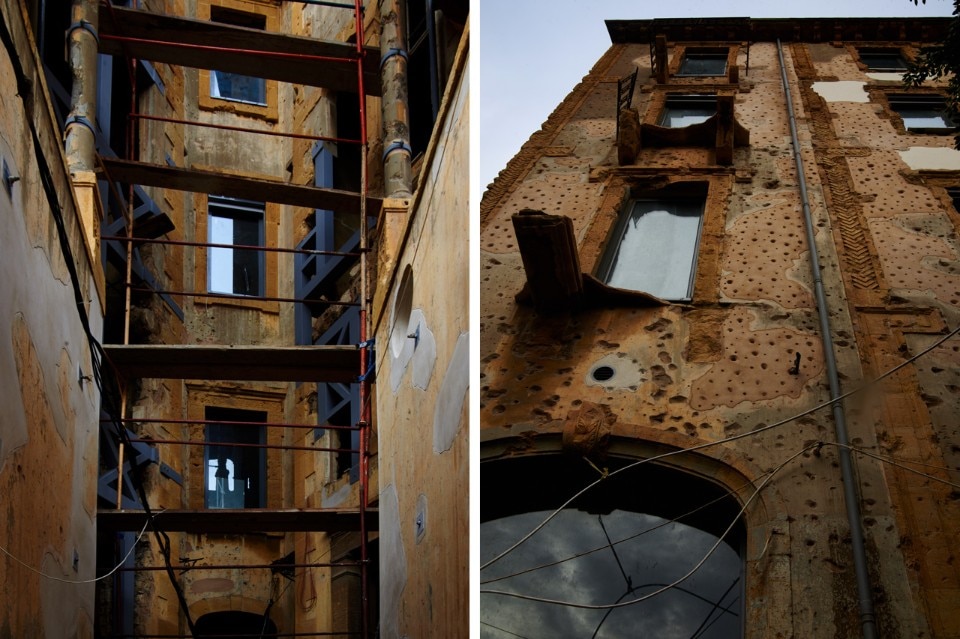
Chabarek, Boano: Archive, memories, life. All in one building and in one city. What are your projects now?
Mona El Hallak: First, my biggest project will always be Beit Beirut. I go every week. I take people around and I am trying to push the curating of the cultural content, the museum content forward, so this will be my biggest project. Dalieh [1] is something that I will support as long as I can. I have been in conferences in the past few months. These are the two big heritages. At the same time I work also with the Minister of Culture on stopping the demolition of old buildings. I work with the Arab Centre of Architecture raising awareness about modern architecture in Beirut.
Chabarek, Boano: Mona, what is your hope for you and Beirut?
Mona El Hallak: I hope that when I am still alive I will see Beit Beirut functioning the way I imagine it and I would see all the beautiful buildings and pockets of greenery and pockets of real life in Beirut are still there, not disappearing. The city is turning into a playground of real-estate developments that enhance the private interest of a select elite and disregard public interest, shared spaces, culture and heritage, and I only see the city developing further issues rather than solving existing ones.
[1] Dalieh is the last of the natural and ecological headlands along the coast of Beirut that has been open-access and a shared space for city dwellers. It overlooks Beirut’s emblematic Sakhret el-Raouche (Pigeon’s Rock), and is currently under threat of real-estate development. The “Civil Campaign to Protect the Dalieh of Raouche” (CCPDR) emerged in March 2013 to advocate for the preservation and enhancement of the role of Dalieh. For more information, visit dalieh.org


